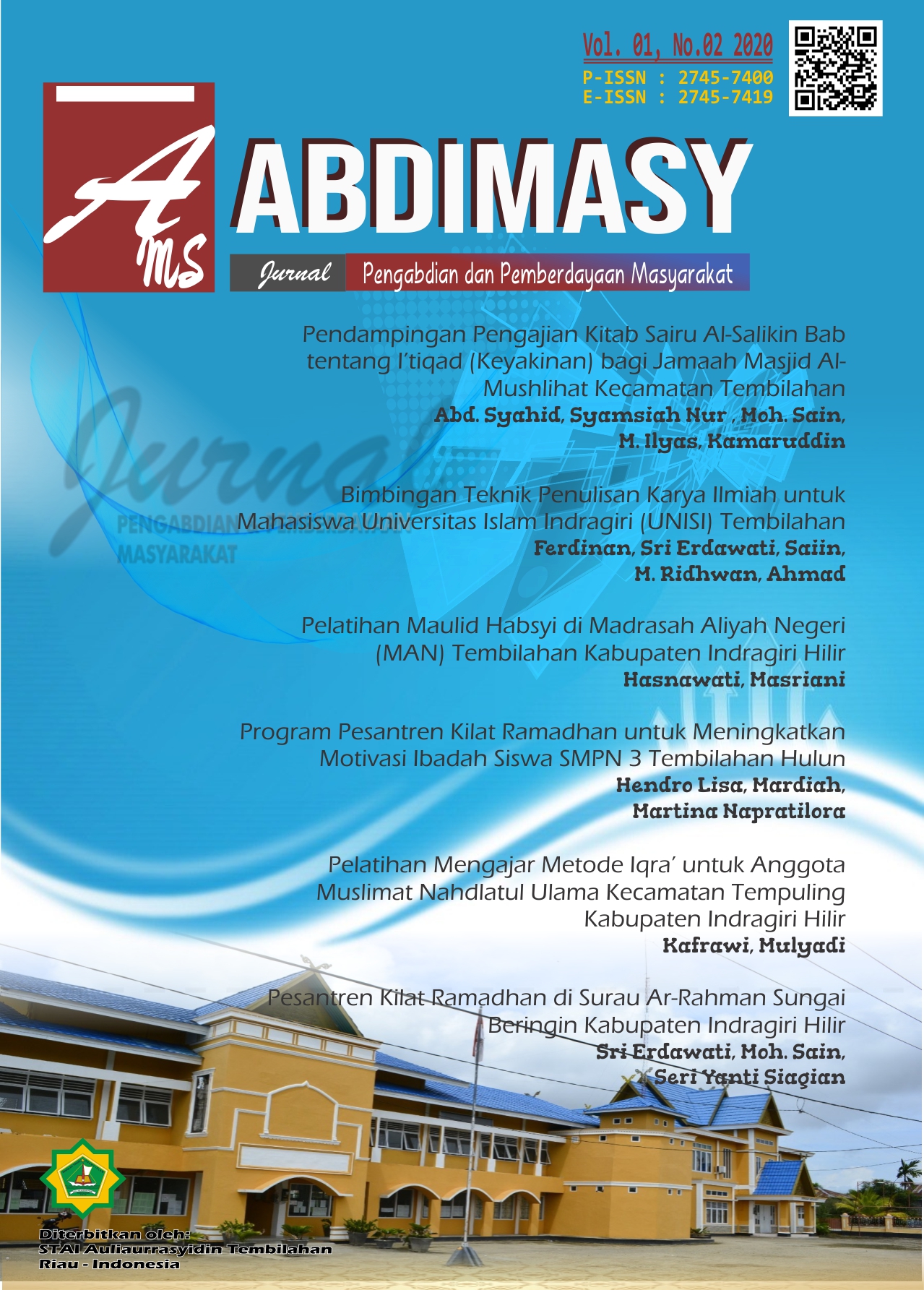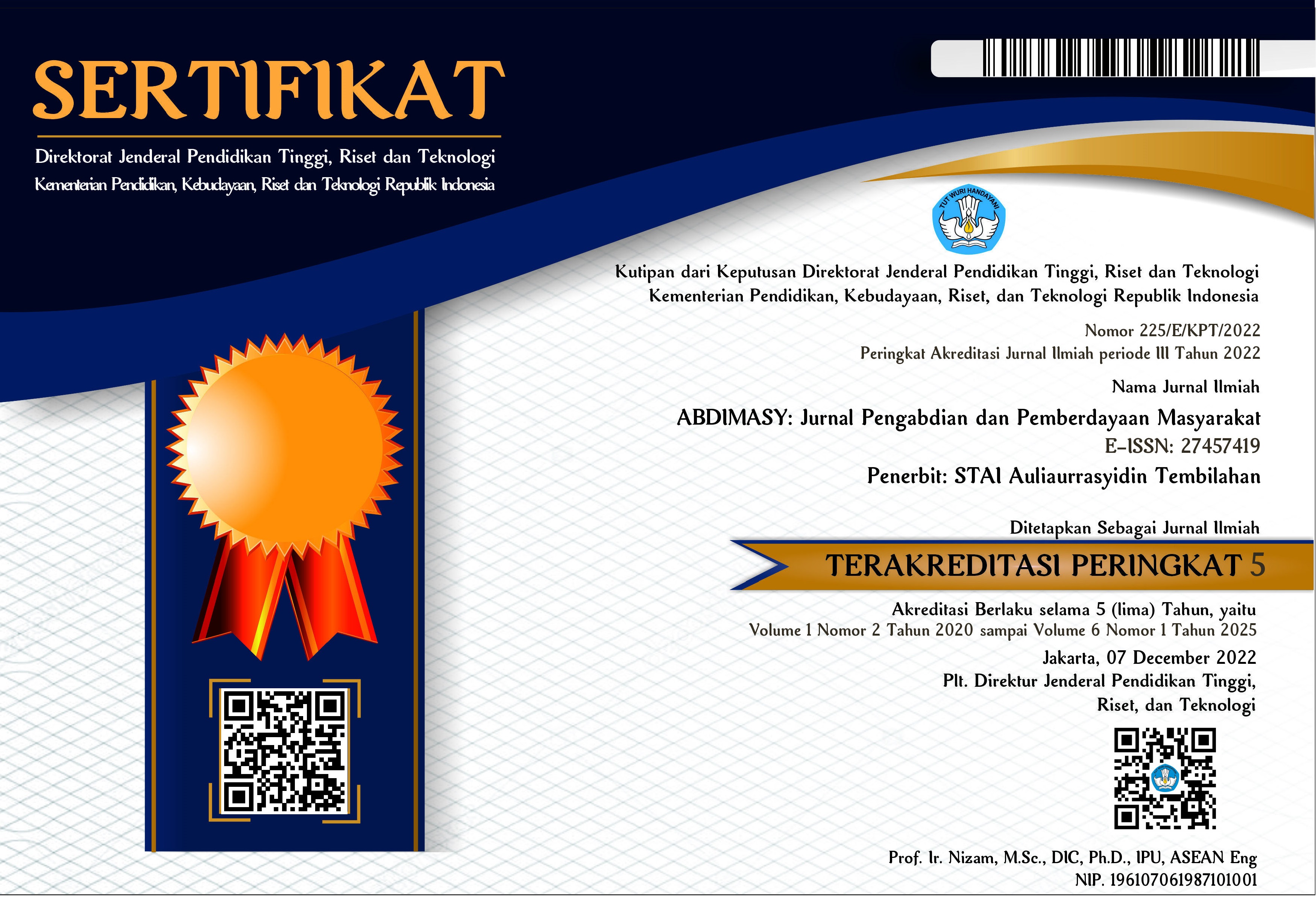Pelatihan Mengajar Metode Iqra’ untuk Anggota Muslimat Nahdlatul Ulama Kecamatan Tempuling Kabupaten Indragiri Hilir
DOI:
https://doi.org/10.46963/ams.v1i2.263Keywords:
Iqra', Method, TrainingAbstract
One of the efforts of Al-Qur'an teachers attempted to find is the best method for teaching the Quran. They, the teachers wish that the Quran can be delivered and read easily for anyone. So, the Iqra method is an effort to make the Quran easier to learn and read it accurately. This method is important for teachers, groups of ta'lim who teach the Qur'an because it directly teaches the tajwid in some stages. However, it is also important to deliver these community activities for Muslim members, especially NU (Nahdatul Ulama) where most of its members are majlis ta'lim and teachers of the (TPA). The purpose of this community service was to give an understanding of teaching this method. This activity successfully achieved two goals. 1. Internal targets: NU Muslims can deliver better teaching method than their previous teaching. 2. External targets: They experienced in teaching the Iqra method. The strategy or the method used during this community service was questioning, and answers to the participants.
Downloads
References
Azhar, M. (n.d.). cara cepat bisa mengaji atau membaca Al-Quran. Jakarta: Ahsan Media.
Djamarah, S. B. (2011). Psikologi dan Pembelajaran. Jakarta: Rineka Cipta.
Hasnawati, H. (2020). Implementasi Model Pembelajaran Tadzkirah Pada Pelajaran Aqidah Akhlak Di Madrasah Ibtidaiyah (Mi) Nurul Jihad Kecamatan Tembilahan Hulu. Edukasi, 8(1), 64-77.
Nur, S., & Hasnawati, H. (2020). Metode Targhib dan Tarhib dalam Pendidikan Islam. Al-Liqo: Jurnal Pendidikan Islam, 5(01), 64-77.
Downloads
Published
Issue
Section
License
Authors who publish with this journal agree to the following terms:
1. Copyright on any article is retained by the author(s).
2. The author grants the journal, right of first publication with the work simultaneously licensed under a Creative Commons Attribution shareAlike 4.0 International License that allows others to share the work with an acknowledgment of the work’s authorship and initial publication in this journal.
3. Authors are able to enter into separate, additional contractual arrangements for the non-exclusive distribution of the journal’s published version of the work (e.g., post it to an institutional repository or publish it in a book), with an acknowledgment of its initial publication in this journal.
4. Authors are permitted and encouraged to post their work online (e.g., in institutional repositories or on their website) prior to and during the submission process, as it can lead to productive exchanges, as well as earlier and greater citation of published work.
5. The article and any associated published material is distributed under the Creative Commons Attribution-ShareAlike 4.0 International License





2.png)



